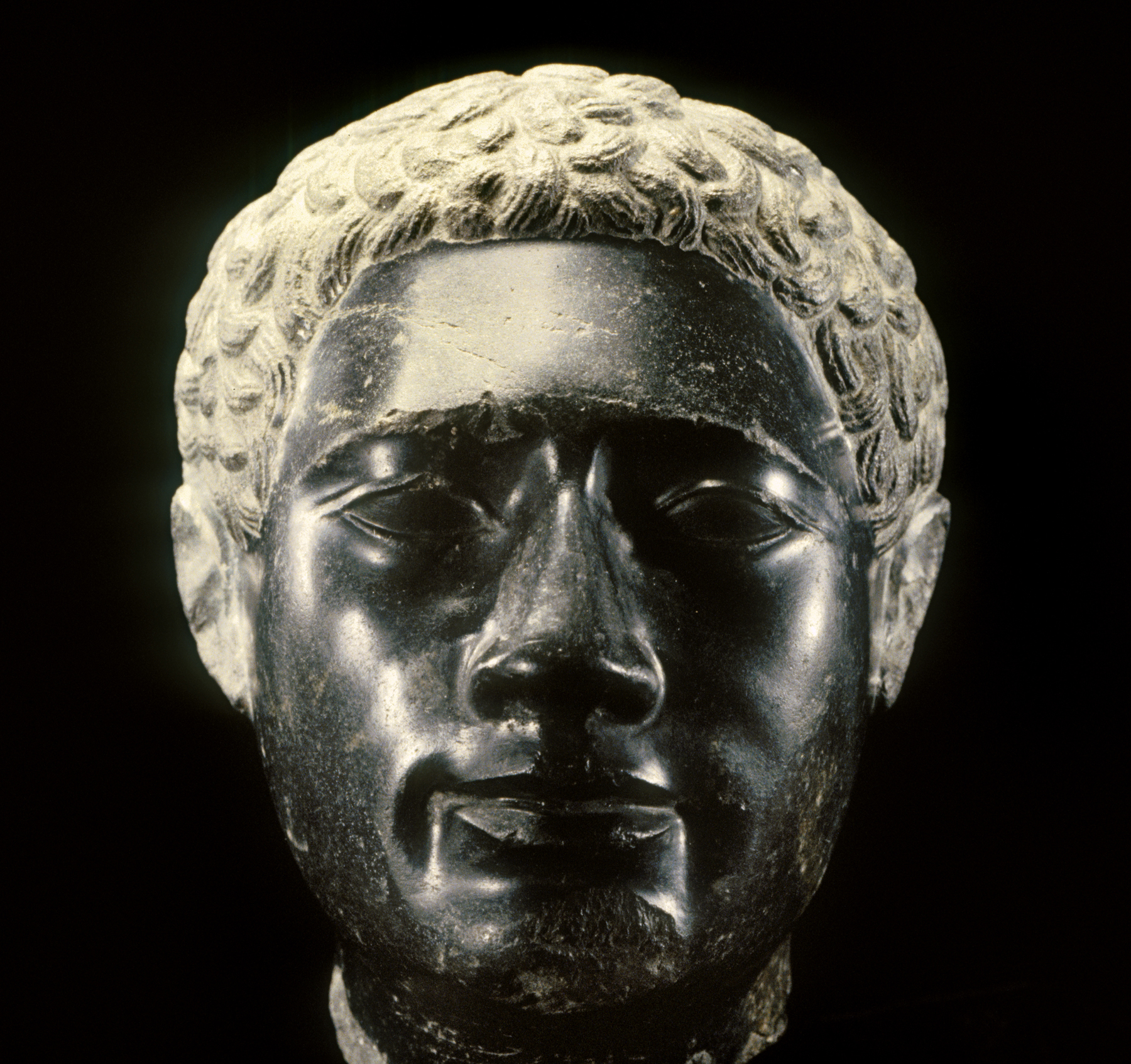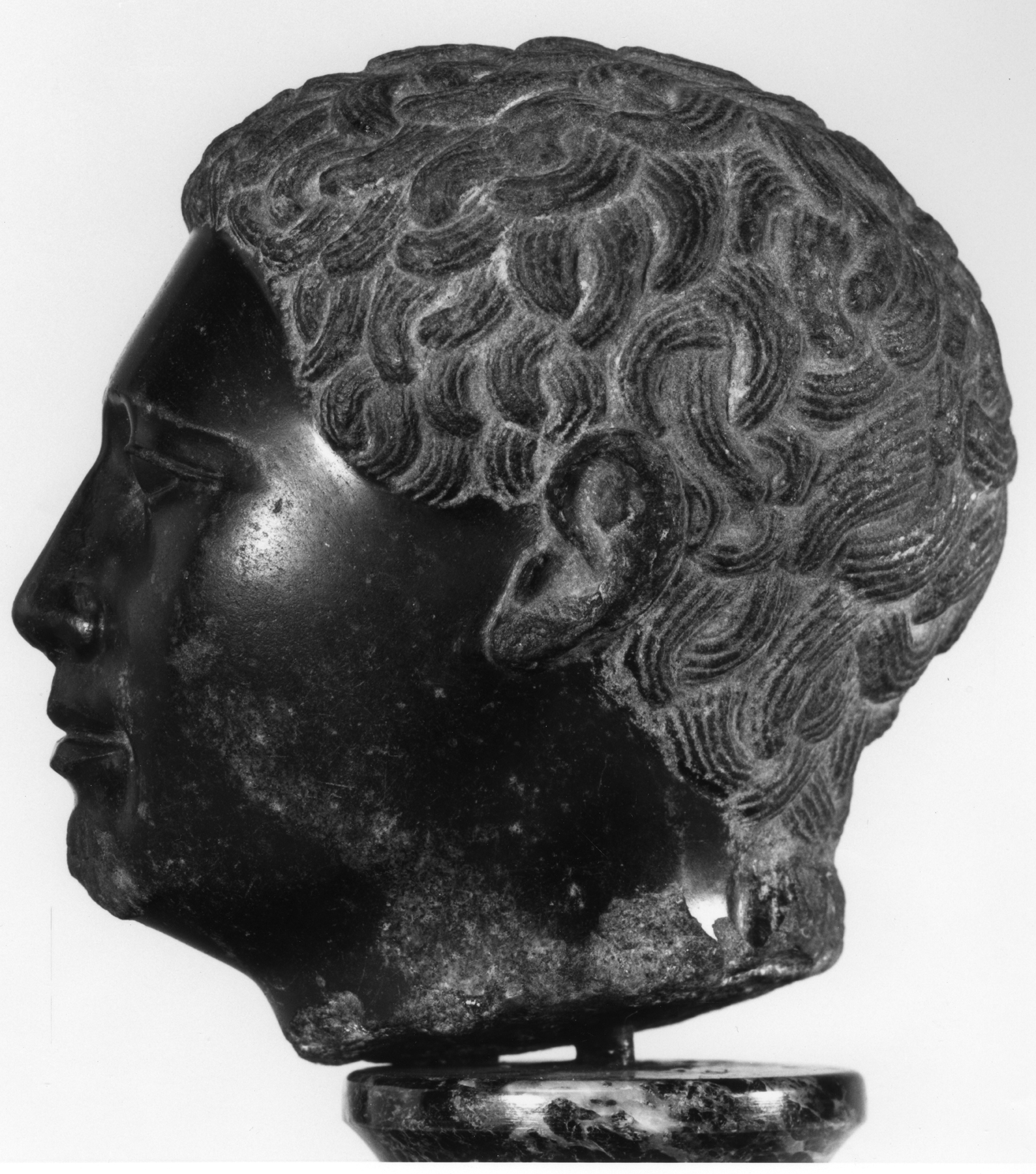Head of a Man
This depiction of a young man with abundant curly hair combines features of both Egyptian and Greek sculpture of the Hellenistic Period (331-30 BCE). Egyptian elements include the use of the hard, dark stone, the precision with which the eyes have been carved, and the use of contrasting surfaces, with the highly polished face set off by the unpolished curls. The delicate modeling of the cheeks, slightly parted lips, and hairstyle are characteristic of Greek naturalism. The complete statue probably represented the owner striding and wearing a short Egyptian kilt.
Provenance
Provenance (from the French provenir, 'to come from/forth') is the chronology of the ownership, custody, or location of a historical object. Learn more about provenance at the Walters.
Dikran Kelekian, New York and Paris [date and mode of acquisition unknown] [said to be from Luxor]; Henry Walters, Baltimore, 1909, by purchase; Walters Art Museum, 1931, by bequest.
Exhibitions
| 1988-1989 | From Alexander to Cleopatra: Greek Art of the Hellenistic Age. The Walters Art Gallery, Baltimore. |
Conservation
| Date | Description | Narrative |
|---|---|---|
| 6/27/1988 | Treatment | cleaned; loss compensation; coated |
| 10/20/1998 | Examination | survey |
| 8/19/1999 | Treatment | cleaned; other |
Measurements
4 13/16 x 3 15/16 x 4 5/16 in. (12.2 x 10 x 11 cm)
Credit Line
Acquired by Henry Walters, 1909
Location in Museum
Accession Number
In libraries, galleries, museums, and archives, an accession number is a unique identifier assigned to each object in the collection.
In libraries, galleries, museums, and archives, an accession number is a unique identifier assigned to each object in the collection.
22.226










